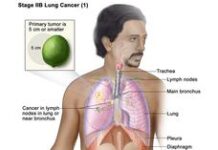We have all seen in the news that there is still lots of discussion about how COVID-19 is really transmitted from person to person. Is it transmitted by droplet or by airborne transmission? The current stance is that it is transmitted through droplets, but researchers are not fully convinced that this is the only way COVID-19 is being spread from person to person. I’m sure at this point you might be a little perplexed or maybe you are still having a hard time understanding the need for masks. Rest assured that wearing a mask is not a hoax! Using a mask properly protects from droplet transmission of the virus.

So, what’s the difference between droplet and airborne?
Droplet: Germs travel in the droplets (small moist particles) that are released when:
- Coughing
- Sneezing
- Talking
- Close contact with an infected person
There are some other common virus/infections that you are familiar with that are also transmitted via droplet transmission, which include:
- Pneumonia
- Flu
- Whooping cough
- Bacterial meningitis
Airborne: Germs travel through air currents, on dust and other particles that can spread over time and distance when a person:
- Sneezes
- Coughs
When the germs get placed into the air, they can travel with the flow of the air current for up to 3 hours. The infection/virus gets transmitted to others when a healthy person inhales the infected droplets, or they fall on a person’s face, eyes or nose.
Examples of infections spread by airborne transmission are:
- Chickenpox
- Norovirus
- Measles
- Influenza
- Tuberculosis
COVID19 has been found to spread through droplet transmission of the virus, but it has been suggested by some researchers that COVID could spread by airborne transmission when there is a poor ventilation system. We know for sure that COVID19 spreads through droplets, and until we know for sure about airborne transmission, it is best to take as many precautions as we can. The things we are doing to prevent droplet transmission, like wearing a mask, social distancing between 3 to 6 feet apart, washing our hands, and limiting time indoors with other people will certainly help limit the spread of COVID19. It’s important that we all continue to stay up to date on the WHO and CDC guidelines on how to prevent the spread of COVID19.
Laura Kendrick is a Radiation Therapist at Penn Medicine in the department of Radiation Oncology for 9 years. She completed her Bachelor’s Degree in Radiation Therapy from Gwynedd-Mercy University and her Master’s Degree in Healthcare Administration from St. Joseph’s University. Laura has extensive experience in proton therapy, training of radiation therapist’s both domestic and internationally and has created multiple proton training videos for different vendors. Laura has been with Oncolink since 2017, but joined part-time in 2020 as Global Education Coordinator and is currently developing virtual reality training modules to train radiation therapist around the world.







